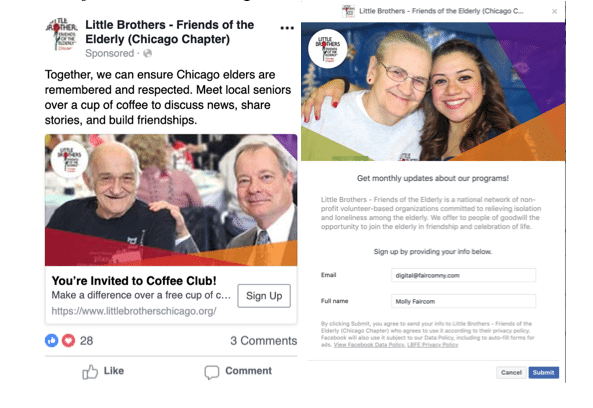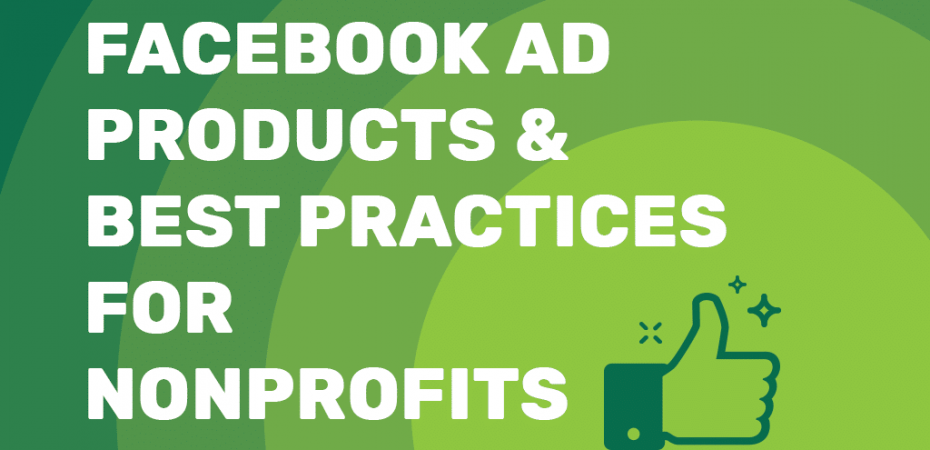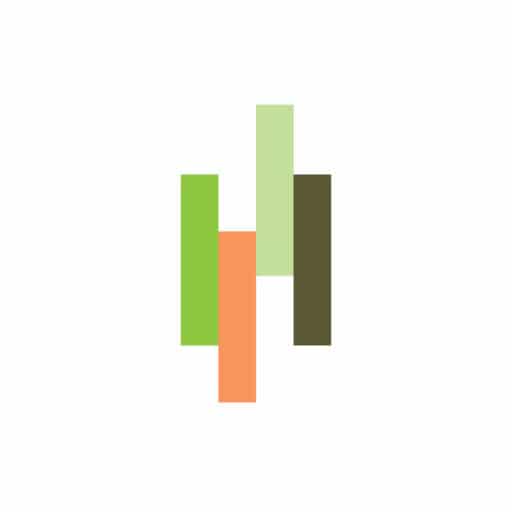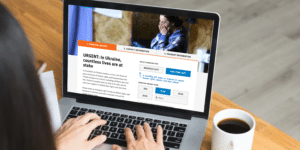By Miriam Braun, Digital Marketing Manager
In the 15 years since Facebook’s inception, the platform has gone through many evolutionary periods: from a collegiate message board, to a place to connect with friends, to a communications tool between brands and consumers, to the global advertising, digital behemoth it is today. With these changes came new and updated products through which brands could advertise on the platform. Making use of these tools strategically and effectively is the key to a company making the most of their social media strategy.
Here are just a few ways to use some of Facebook’s myriad of advertising tools, specifically for the nonprofit sector:
Lead Generation Ads
By far one of the most useful advertising tools that Facebook offers is the Lead Generation Ad. This ad allows you to gain new supporters by targeting those who most likely will be interested in your brand and actively inviting them to sign up for more information. You can do so by offering an incentive, such as a free download of a report, in exchange for an email address, or by simply asking them to give their information to learn more about you. These people are opting into receiving communication from your brand because they are indicating they are interested in what you have to offer. The most effective lead gen ad is transparent, uses strong and to-the-point language and creative assets, and is targeted very specifically. A swift follow up to those who have opted- in via email or a second retargeting ad is the vital next step to complete this process.
Example from LBFE Chicago

Peer to peer fundraising
Facebook has put a lot of energy in the past couple years to offer some great products for nonprofits and to ease the donation process within the platform. For example, the donate button directly located on the nonprofit’s homepage or the generous matches they have offered on Giving Tuesday (which have been utilized in minutes!). Additionally, they now offer users the ability to create peer-to-peer (P2P) fundraisers for the nonprofits of their choice right in the platform. P2P fundraising has been gaining steam in recent years, as it allows donors to take ownership and rally their friends – usually giving small amounts – to give where they care most. All the P2P pages that have been created on behalf of your non-profit will in turn appear on your page. It’s important to note, however, that Facebook releases limited data on those who have donated, and only if they opt in do you receive their information.
Example from LBFE Chicago

Creative testing
Facebook’s Ad Platform is vast, with many options and ever-changing abilities. One of the best opportunities they give is the ability to test creatives. For example, when setting up an ad, you have the option to utilize up to five different creatives, allowing you to see which one performs best. You can also run tests side by side, and they will formulate the results for you. Testing of both copy and creative assets in advertising is the best way for an organization to see what performs best for their specific audience and continue to learn about how to improve going forward.
Example from IWHC

Number of placements per ad, including Facebook Ads Network
Within each Facebook ad, there are numerous placements where the ad can be shown. With just one photo/video and copy, your ad can be promoted within the Facebook news feed, Facebook right hand newsfeed, mobile, desktop, Facebook stories, Instagram stories, and Instagram newsfeed, to name a few.
Mobile News Feed Example

Desktop Right Column Example

Instagram News Feed Example

Audience Network Example

Special attention needs to be paid when utilizing all these placements, because although they can easily be set into motion with just a click of a button, they might each require unique photo specs or different language, for example less space for copy is given on a Facebook or Instagram story, and a vertical photo is best used in that scenario. Each placement also has its own benefits and targeting capabilities, for example, reaching an audience on Instagram will statistically be younger than the audience on Facebook. It’s best practice to scroll through each to make sure the creative lines up. Lastly, Facebook includes the Facebook Ads Network within this package – the ability to have your ad shown on outside websites that “sell” leftover digital banner space to Facebook on a bidding basis. If there are certain sites you want to blacklist, make sure to do this before you click on the blanket placement option. And of course, you always have the option to choose as few placements as you like.
Lookalike Audiences
Facebook allows for some great targeting when it comes to interests and demographics, but it also allows you to target lookalike audiences from your existing base. For example, if you upload a list of your constituents, and Facebook matches their email addresses to Facebook accounts, you can target these accounts in addition to creating a separate target group based on those Facebook deems are similar to your existing group. Or you can create a lookalike group similar to those who have interacted with your site, after placing a cookie on your website and gathering data. This allows you to fully take advantage of the benefits of social media, in that you can spread your reach based on your existing universe to reach their friends, or those similar to them, as well.




